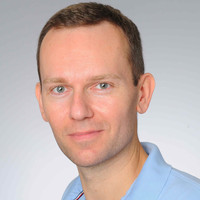Our lab explores the existence and significance of epigenome structural alterations for ageing and its impact on disease development. Hence, the structure of the genome may significantly change with age and become predisposed to disease development, such as cancer or degenerative diseases. In particular, we are elucidating whether epigenome structural alterations, such as four-stranded G-quadruplex (G4) DNA, promote age-related genome instability and rewire gene activity and regulation.
Gene activity and regulations change with age, however, underlying relationships with epigenome alterations and genome instability and their impact on ageing and related disease development remain to be determined. Our lab aims to address these main questions: 1) are epigenome alterations passengers or drivers of mammalian ageing, and 2) will particular epigenome structural states promote genome instability and disease development? 3) Can age-related epigenome alterations be suppressed and prolong mammalian tissue fitness? 4) Are defined epigenome states of diagnostic and therapeutic value?
Epigenetic alterations and genomic instability are hallmarks of ageing and cancer. Normal and premature mammalian ageing is characterised by the accumulation of chronological changes in (epi)genotype and phenotype that ultimately leads to senescence (e.g., stable cell cycle arrest). Age-related epigenetic alterations range from a gradual loss of histone synthesis and heterochromatin, increase in histone acetylation, chromatin remodelling defects, and deregulated gene transcription. Intriguingly, many G-quadruplex (G4) DNA-resolving helicases are mutated in premature ageing and cancer-promoting syndromes.
Using non-invasive NMR spectroscopy, we discovered for the first time four-stranded G-quadruplex (G4) secondary structure formations in the nuclear environments of live cells. We recently revealed that G4 structure formation is prevalent in highly transcribed nucleosome-depleted regions (NDRs) of cancer-cell models but diminished in normal human keratinocytes or human foetal lung cells. These studies suggest that G4s are dysregulated epigenome structural alterations that occur in cancer. Importantly, the induction of histone acetylation revealed elevated G4 formation, which suggests that G4s might arise before cancer development in aged epigenomes; this potentially underpins why aged genomes are prone to oncogenesis and genome instability. DNA damage, such as DNA double-strand breaks (DSBs), poses a particular challenge for DNA repair machinery and is considered to be a critical source of age- and cancer-related genome instability. We have recently determined endogenous genome-wide DSB frequencies in cell models with single-nucleotide resolution. Strikingly, we discovered elevated DSB frequencies in NDRs at transcription start sites of highly transcribed genes, which are, intriguingly, a hotspot environment for G4 formation. Our study suggests that NDRs at highly expressed promoters undergo elevated DSB and G4 structure formation, thereby posing a severe threat to the aged but less efficient DNA repair machinery. Overall, it is conceivable that dysregulated G4 formation and/or chromatin structural alterations may contribute to the inherent cancer-risk associated with ageing (Fig. 1).
Response and resistance to anticancer therapies vary owing to inter- and intra-tumour heterogeneity. Aberrant gene activity and genome instability are critical processes in cancer development. Precision medicine aims to characterise tumour heterogeneity and identify cancer-specific molecular vulnerabilities. Cancer gene regulation determines cancer identity, plasticity, and, importantly, reflects on the epigenome structure. For example, transcription factors regulate gene expression by occupying distinct genomic regions where DNA is nucleosome-depleted and transcribed.
Our lab explores the diagnostic and therapeutic potential of age- and cancer-related epigenome structural alterations. Very recently, we have developed a quantitative ChIP-seq (qChIP-seq) technology to stratify patient-derived cancer xenograft models, reflecting on personalised genome architecture, transcription factor regulation and activity as well as cancer subtypes suitable for drug-treatment (Fig. 2). We will employ our new quantitative ChIP-seq technology to uncover transcriptional regulation, genome architecture and vulnerability of lung cancer. In the first phase, we will establish proof-of-principle benchmark genome-wide landscapes in established lung cancer cell models, for example, small cell lung cancer (SCLC) vs Non-SCLC (NSCLC). We will further explore whether drug-resistant in comparison to drug-sensitive lung cancer models display considerable alterations in transcriptional regulation and genome architecture. In the second phase, we will validate these findings in established patient-derived circulating tumour cell xenograft models and infer qChIP-seq signatures to stratify, predict, and validate drug-response and resistance.
Ageing is one of the most significant cancer risk factors, and it is not understood whether age-related epigenome alterations promote ageing and cancer development. Our future work aims to elucidate fundamental mechanisms of ageing; here, the relationship between two hallmarks (epigenome alterations and genome instability) of ageing and cancer may trigger cancer formation. The possibility to reverse age-related epigenome structural alterations is likely to create new therapeutic and diagnostic concepts to extend healthy ageing and reduce cancer risk.
Mutational signatures of lung cancer have been extensively characterised, but the impact of epigenome alterations is less understood. Our lab aims to uncover epigenome alterations that critically drive lung cancer.
For further information please check the Haensel-Hertsch Laboratory For Genome Biology's webpage.

Center for Molecular Medicine Cologne | Lab. for Genome Biology | CMMC Research Building
CMMC - PI - JRG 10
CMMC - Co-PI - C 02
robert.haensel-hertsch[at]uni-koeln.de
show more…+49 221 478 96988
07071 29 5171
Center for Molecular Medicine Cologne | Lab. for Genome Biology | CMMC Research Building
Robert-Koch-Str. 21
50931 Köln
Thomas Akkermann (Bachelor student)
Joana Frobel (PostDoc)
Michaela Höhne (PostDoc)
Pascal Hunold (PhD student)
Anna Koch (PhD student)
Priscilla Piccirillo (PhD student)
Olivia van Ray (Technician)